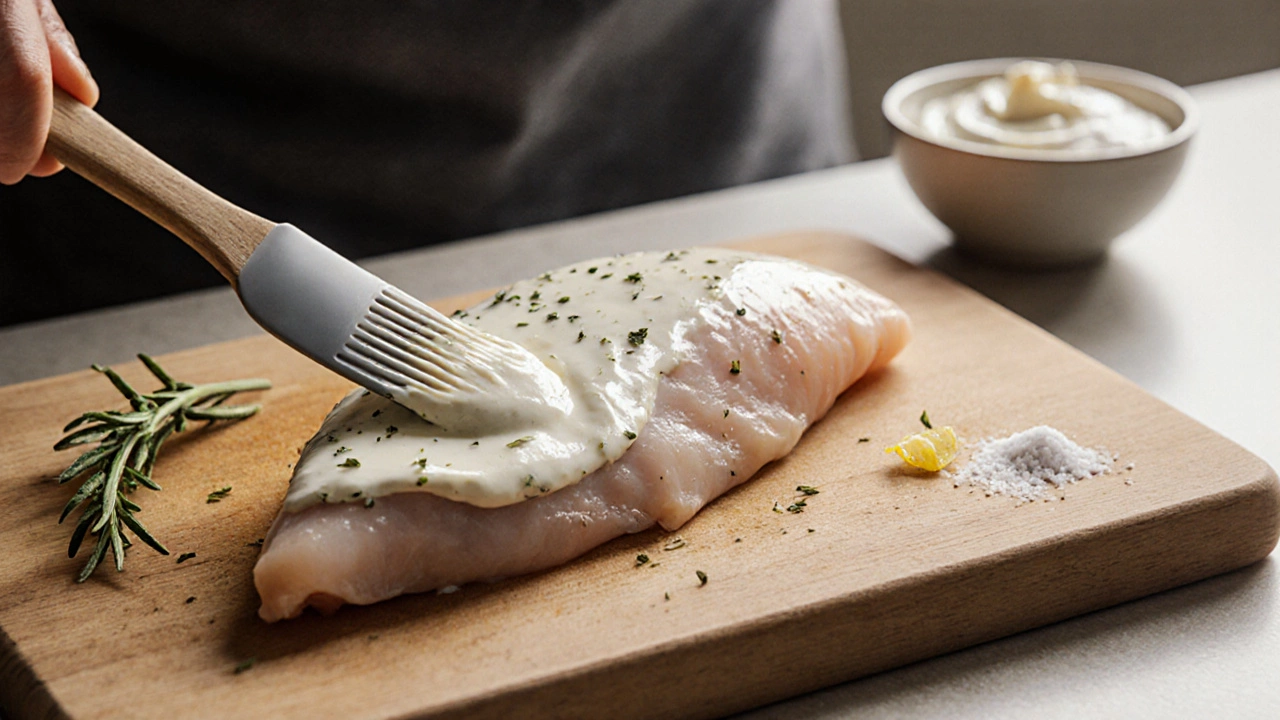Chicken Moistness: How to Keep Your Poultry Juicy Every Time
When working with chicken moistness, the ability of chicken meat to stay juicy and flavorful after cooking. Also known as juiciness, it decides whether a dinner feels satisfying or dry.
Most home cooks focus on the chicken breast, a lean cut that dries out quickly if overcooked. The secret to chicken moistness lies in three simple ideas: lock in moisture before heat, control the heat during cooking, and let the meat rest afterward. Marinating is the first line of defense – a blend of acid, oil, and salt creates a brine that penetrates the fibers. This is why chicken marinades, mixtures that add flavor and help retain water are a staple in any kitchen that wants tender chicken.
Temperature is the next pillar. Cooking at too high a heat forces the proteins to contract fast, squeezing out juices. A moderate cooking temperature, usually between 150‑165°C (300‑325°F) for roasting lets the meat heat evenly, preserving moisture. Slow cooking methods, like using a slow cooker, an appliance that gently braises food at low temperatures, excel at this because they keep the internal temperature low while still breaking down connective tissue. The semantic triple here is clear: chicken moistness requires proper cooking temperature, and a slow cooker provides that environment.
Practical Steps to Boost Moisture
Start with a quick brine: dissolve 1 tbsp salt in 1 cup water, add a splash of sugar, and soak the chicken for 30 minutes. Pat dry, then apply a thin coat of oil and your favorite herbs. This pre‑treatment tackles moisture loss before the heat even arrives. Next, sear the breast in a hot pan for 1‑2 minutes per side – the quick browning creates a flavor barrier without overcooking the interior. Transfer to an oven set at 160°C (320°F) and roast until the internal temperature hits 74°C (165°F). For a hands‑off option, place the seasoned pieces in a slow cooker with a cup of broth and let them cook on low for 4‑5 hours. The result is consistently juicy meat that stays tender even after cooling.
Resting is the final, often overlooked step. Let the cooked chicken sit for 5‑10 minutes before slicing. During this pause, the juices redistribute, turning a potentially dry slice into a moist bite. Skipping the rest is like cutting a cake before it sets – the interior runs right out. By combining brining, moderate heat, and proper rest, you create a reliable recipe for achieving top‑grade chicken moistness every time.
Below you’ll find a curated set of articles that dive deeper into each of these techniques. From detailed marinades to temperature charts and slow‑cooker tricks, the collection gives you actionable insight to turn any chicken dish into a moisture‑rich masterpiece.

How Mayonnaise Keeps Chicken Juicy - The Science Behind Moist Chicken
Learn why mayo locks in chicken moisture, the science behind the barrier, and how to use it for tender, flavorful results.
More Detail